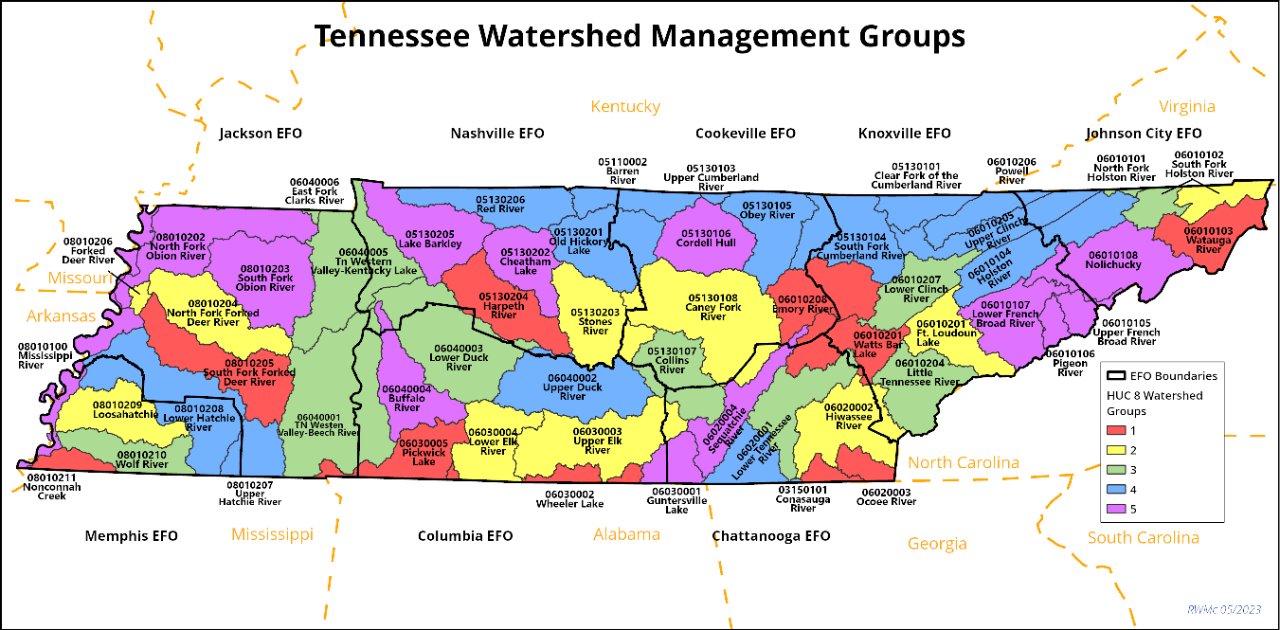Watershed Management Cycle
The watersheds in Tennessee are organized into five groups and arranged to allow at least one watershed from each group within field office boundaries. The Division of Water Resources bases activities for each group by its position in the cycle.
Key activities occur during the cycle:
Planning and Data Review. Existing data and reports from appropriate agencies and organizations are compiled and used to describe the current conditions and status of rivers and streams. Review of all data and comparison of agency work plans guide the development of an effective monitoring strategy.
Water Quality Monitoring. Field data are collected for streams in the watershed and follow-up collection occurs approximately a year later if needed.
Water Quality Assessment. Monitoring data are used to determine the designated use support status of streams and lakes in the watershed by comparing data to the water quality standards.
TMDL or Alternative (Restoration Plan) Development. A TMDL is part of a plan for water bodies to re-attain water quality standards. When appropriate, alternative plans are developed where a plan, or set of actions, pursued in the near term are designed to meet water quality standards.
Permitting Issuance. Issuance and expiration dates of individual discharge permits are synchronized based on watersheds.
Stakeholder Engagement. Stakeholder engagement is active all throughout the watershed cycle in order to bring together and engage many different agencies, groups and citizens, allowing them to learn about activities that are happening in the watershed and to seek collaborative effort opportunities.
Below is a general time-line for watershed activities throughout the state:
| Contact |
|---|
| Richard Cochran Watershed Planning Unit Manager Richard.Cochran@tn.gov |
This Page Last Updated: July 9, 2024 at 7:22 PM


